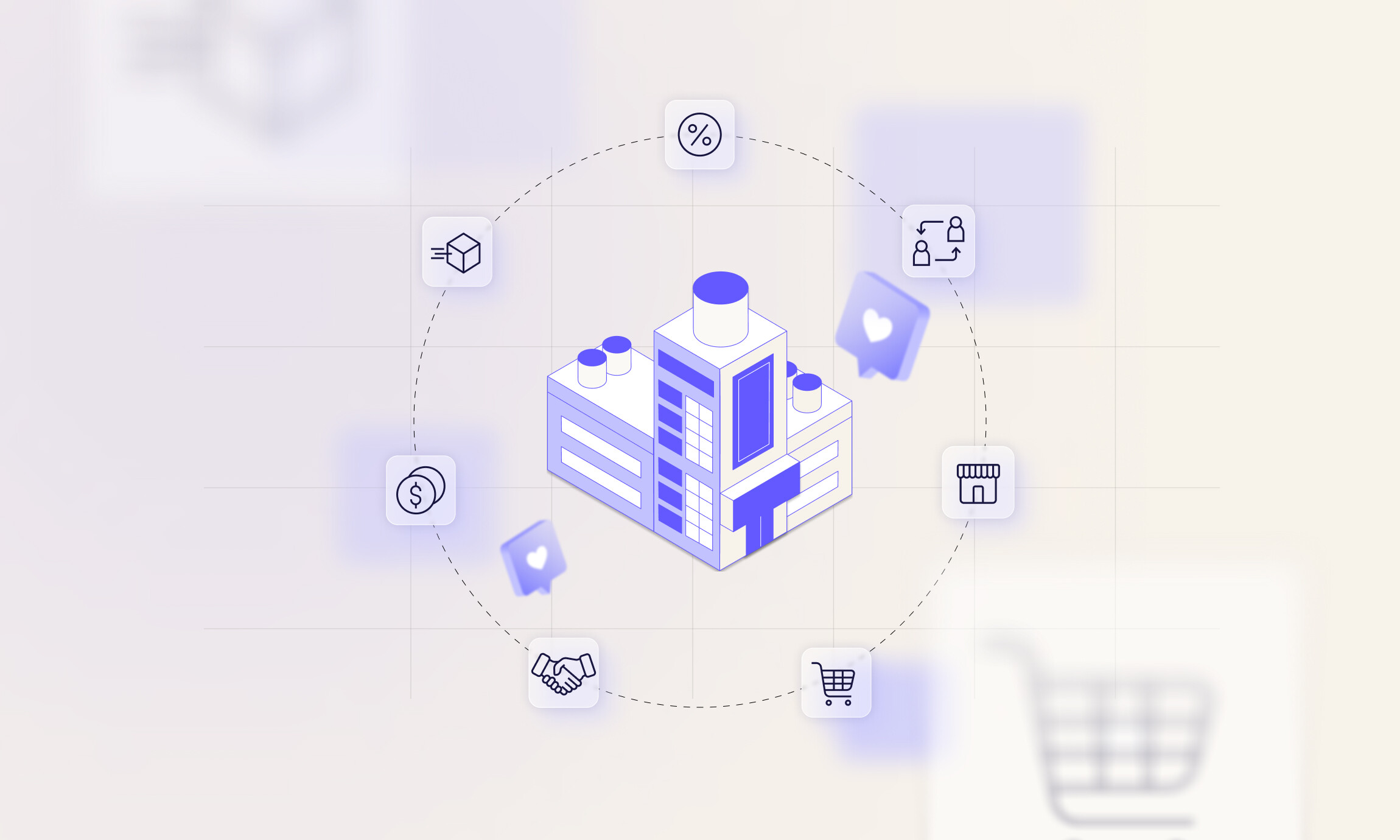
What you’ll learn:

Everywhere we turn, B2B eCommerce boasts remarkable growth, with manufacturers modernizing their digital infrastructure at an unprecedented pace. It’s clear that making the B2B sector digital is brimming with opportunity. A recent report¹ revealed that three in four manufacturers expected eCommerce to drive the most revenue growth for the year. For 2025, eCommerce is driving new product revenue growth for 56% of surveyed B2B leaders and aftermarket revenue growth for 63%.
According to McKinsey², eCommerce has overtaken in-person sales as the leading revenue channel, with over 33% of revenue now coming from eCommerce in organizations that offer digital purchasing options. Notably, B2B buyers are now more comfortable placing orders of more than $500,000 USD through remote and self-service channels.
B2B eCommerce has rapidly accelerated in the last five years, but the spectrum of digital experiences is still very wide. While scores of organizations just have a website without transactional capabilities or even a digitized product catalog, many others are digitally mature organizations selling across multiple channels, and continuously investing in tools and processes to enable even more digital capabilities.
Evidently, the top driver of this digital fever is creating an exceptional buyer experience, especially surrounding omnichannel and self-serve journeys. Today, B2B customers use an average of 10.2 channels during their decision journey², a 2x increase from 2016, as consumer-grade expectations gain traction in B2B buying experiences.
So, how can manufacturers fully digitize commerce processes to meet the ever-evolving expectations of B2B buyers now and in the future?
While B2B executives understand they must invest in eCommerce channels, hybrid sales and omnichannel experiences, the practical implementation is frequently hindered by a multitude of complexities. These range from managing multi-tiered distribution channels and meeting customer-specific demands to dealing with siloed data, a shortage of internal digital skills, and, unsurprisingly, outdated eCommerce technology.
According to Forrester Research³, 65% of B2B sellers consider their eCommerce broken in their organizations. Even more concerning, 81% of surveyed respondents utilize an eCommerce platform that “lacks tools, can’t handle the complexity of products, collect customer data, or scale effectively.”
In other words, most B2B organizations, particularly manufacturers, continue to rely on monolithic systems that lack the flexibility and scalability required to support the essential digital capabilities in such a dynamic market.
The rise in composable implementations in B2B manufacturing
As the imperative to digitize sweeps through the manufacturing industry, there’s a distinct shift among B2B practitioners as they transition from viewing digitalization as a reactive measure to current challenges to embracing it as a proactive strategy for future success. Today, investing in digital maturity and agility is a paramount agenda for top executives in this sector, as it enables them to navigate market volatility more effectively.
Composable commerce lies at the heart of such initiatives as it empowers businesses to modernize and adapt their tech stacks to address upcoming challenges and opportunities, from predictive analytics to crafting an eCommerce strategy tailored for aftermarket spare parts.
For instance, aftermarket spare parts represent a critical and often under-optimized revenue stream for manufacturers. With composable architecture, manufacturers can build dedicated, flexible digital storefronts that support highly complex product catalogs, custom pricing, regional availability and real-time inventory visibility. This agility allows manufacturers to scale spare parts offerings globally, introduce automation into recurring orders and maintenance workflows, and ultimately strengthen long-term customer relationships, while unlocking a high-margin revenue source.
There’s more: A key reason manufacturers embrace composable commerce is that it’s now much easier and faster to implement. What was once considered a sort of “Pandora’s box” by business and technology leaders, the myths of complexity surrounding composable commerce have been debunked as forward-thinking B2B manufacturers demonstrate the simplicity of their implementations and the fast time to value they achieved.
BIC accelerates digital transformation with composable commerce
Conclusion: Enterprise B2B manufacturers will shift to composable faster
Composable commerce is quickly becoming the present-day standard for enterprise B2B manufacturers. As competitive pressures mount and customer expectations evolve, large manufacturers are leading the charge toward composability, recognizing it as the key to unlocking speed, flexibility and long-term digital resilience.
Pre-composed solutions like commercetools Foundry for B2B Manufacturing are accelerating this shift by dramatically reducing implementation complexity. This solution provides a proven blueprint for manufacturers to reduce time to market by up to 30% while delivering tailored, high-performance B2B experiences.
In parallel, agentic commerce is emerging as a transformative layer, enabling intelligent automation across complex sales workflows. From personalized recommendations to autonomous quote generation and real-time customer support, these AI-powered agents help manufacturers streamline operations and elevate the buying experience.
The momentum is undeniable. With 80% of B2B sales interactions⁴ expected to occur in digital channels by 2025, composable commerce positions manufacturers to meet this moment — and win. For enterprises seeking to modernize at scale, composable isn’t just faster. It’s smarter, leaner and built for what’s next.
Ready to explore what composable commerce can unlock for your B2B digital transformation?

Sources: ¹Copperberg ²McKinsey ³Zoovu ⁴Gartner